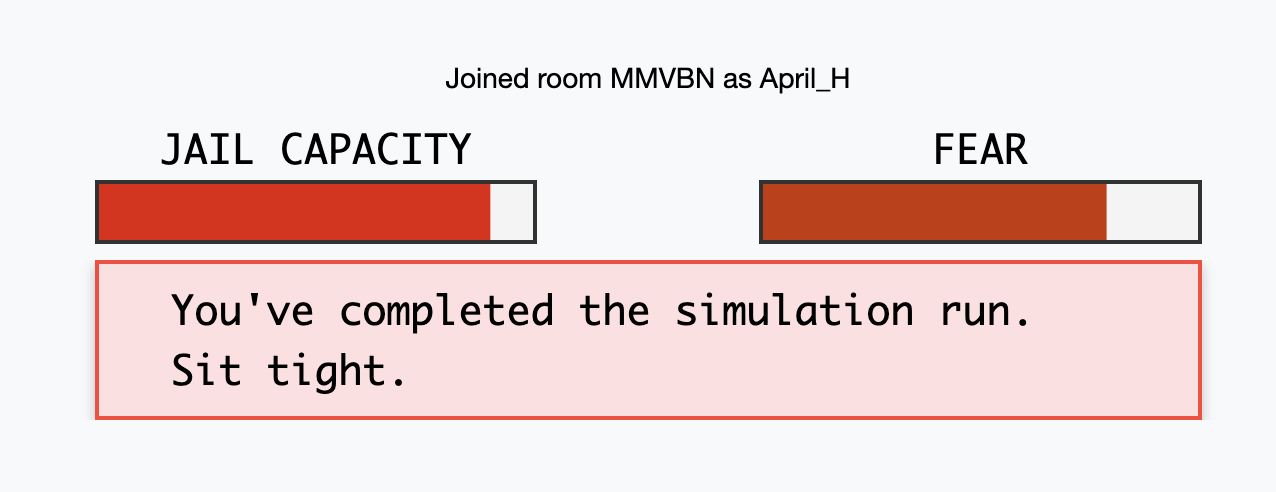Task 11: Detain/ Release
The detain/release simulation was quite intriguing. Even after listening to the podcast with CompStat fresh in my mind, it was challenging to make inform decisions and rely on gut instinct or through an unbiased opinion. The information and colour-coding for “fail to appear,” “commit a crime,” and “violence” influenced my judgments and decisions. A high risk in these areas made me more likely to detain rather than release. While arresting someone with a warrant might feel justified, further information often reveals a more complex situation. This highlights how biases and influences, in this case from algorithms, can shape our perceptions. Reflecting on the detainees, I can’t seem to remember the specific crimes committed. Even when I tried to consider the whole picture, the colour-coded words likely played a strong role in my decisions.
The simulation also presented the challenge of avoiding jail overcapacity, which could lead to releasing high-risk individuals, and the desire to avoid instilling public fear. This resulted in a lack of transparency in justifying my decisions which raises concerns about the fairness of these algorithms. It made me wonder about the outcomes if I had chosen to detain everyone. Knowing about CompStat, this approach would have resulted in unnecessary detentions, overburdened the justice system, and infringed on individuals’ rights, even if it met certain quotas. This simulation underscores the importance of human judgment and ethical considerations in decision-making, as algorithms alone cannot fully account for the complexities of human behaviour.

Reflecting on the simulation results, I felt stuck, recognizing that there is no clear right answer. No matter what choices I made, it felt like a numbers game, and as the news articles appeared, I can only hope the numbers would play in my favour.